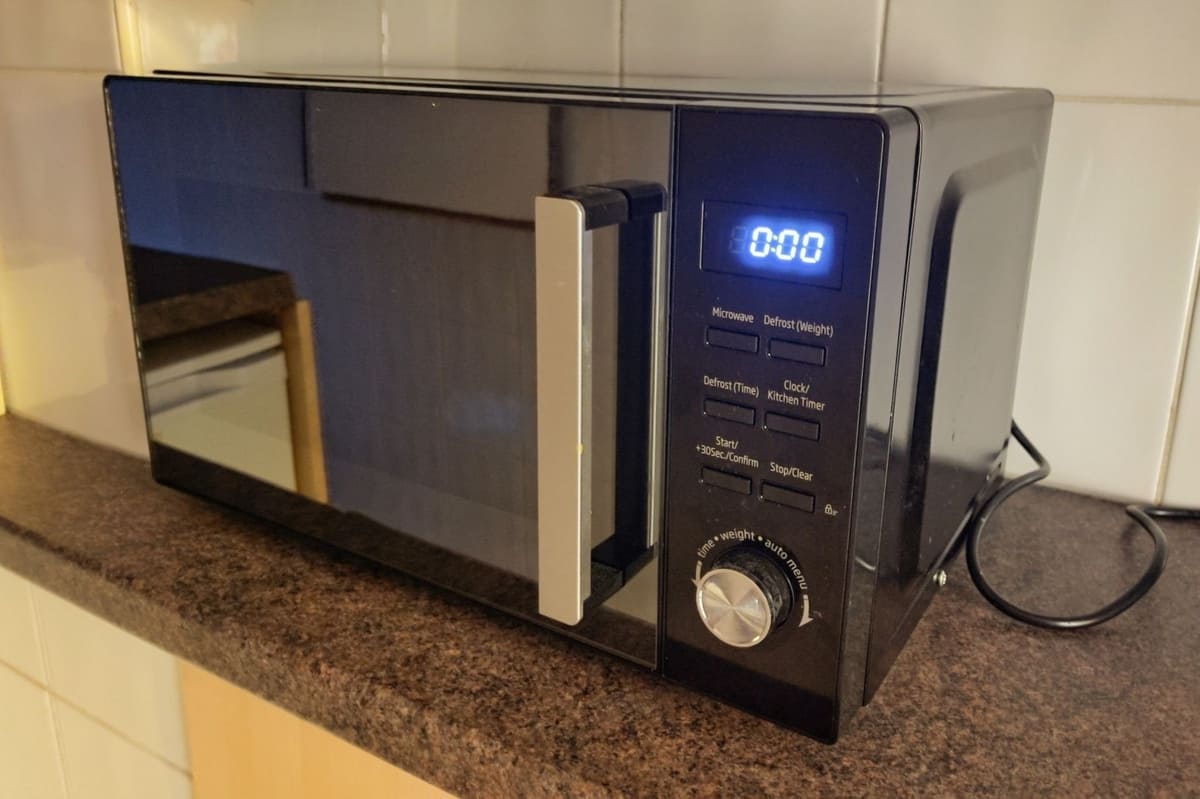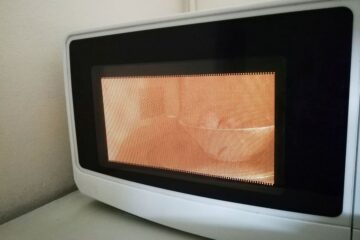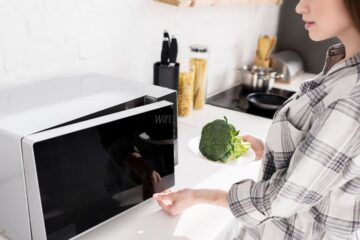Soup is a comforting and nourishing meal that can be enjoyed anytime, anywhere. However, what do you do when you want to heat up your soup, but you don’t have access to a microwave or stove? Whether you’re camping, traveling, or experiencing a power outage, there are plenty of alternative methods to warm up your soup without relying on traditional kitchen appliances. In this article, we’ll explore six effective ways to heat up soup without a microwave or stove, along with tips, precautions, and other methods you can try.
Methods of Heating Up Soup Without A Microwave or Stove
- Using a slow cooker
- Utilizing a pressure cooker
- Using a kettle
- Using an oven
- Utilizing a grill
- Using a campfire or bonfire
Using a Slow Cooker
Advantages of using a slow cooker
- Slow cookers are convenient and easy to use.
- They allow you to cook soups and stews for hours without needing to monitor them constantly.
- They’re energy-efficient and can save you money on your electricity bill.
How to use a slow cooker to heat up soup?
- Pour your soup into the slow cooker and add any additional ingredients you’d like.
- Set the slow cooker on low heat and let it cook for several hours, stirring occasionally.
- Once your soup is heated to your desired temperature, it’s ready to serve.
Tips for using a slow cooker
- Use a slow cooker liner to make cleanup easier.
- Don’t fill the slow cooker to the brim, as the soup will expand as it heats up.
- Don’t lift the lid too often, as this can release heat and increase cooking time.
Utilizing a Pressure Cooker
Advantages of using a pressure cooker
- Pressure cookers cook food quickly and efficiently.
- They’re great for cooking tougher cuts of meat and can infuse soups with more flavor.
- They require less water than traditional cooking methods, making them a more energy-efficient option.
How to use a pressure cooker to heat up soup?
- Pour your soup into the pressure cooker and add any additional ingredients you’d like.
- Seal the lid and set the pressure cooker to the soup setting.
- Once the pressure cooker has heated up and cooked your soup, release the pressure and carefully remove the lid.
Tips for using a pressure cooker
- Follow the manufacturer’s instructions carefully.
- Don’t overfill the pressure cooker, as this can cause it to malfunction.
- Don’t force the pressure cooker open, as this can be dangerous.
Using a Kettle
Advantages of using a kettle
- Kettles are a fast and efficient way to heat up water and soup.
- They’re portable and easy to use.
- They can be used to heat up small quantities of soup.
How to use a kettle to heat up soup?
- Pour your soup into a heat-safe container, such as a mug or bowl.
- Pour enough water into the kettle to submerge the container partially.
- Place the container in the kettle and turn it on.
- Once the water has boiled, turn off the kettle and remove the container.
Tips for using a kettle
- Don’t overfill the kettle with water, as this can cause it to overflow.
- Use a heat-safe container that won’t melt or crack.
- Be careful when handling hot containers.
Using an Oven
Advantages of using an oven
Ovens are a versatile and reliable option for heating up soup, especially for those who don’t have a microwave or stove. They are easy to operate and can provide even heating, resulting in perfectly heated soup every time. Here are some advantages of using an oven to heat up soup:
- Even heating: Ovens provide even heating, which ensures that your soup is heated uniformly. This means that you won’t have to worry about hot spots or cold spots, which can happen when using other heating methods.
- Versatility: Ovens are not just limited to heating up soup. You can use them to cook a wide variety of dishes, such as casseroles, roasted vegetables, and baked goods.
- Easy to use: Ovens are easy to operate, and you don’t need any special skills or knowledge to use them. Simply set the temperature, place your soup in a heat-safe container, and let the oven do the rest.
How to use an oven to heat up soup?
Heating up soup in an oven is a straightforward process. Here’s how you can do it:
- Preheat the oven: Start by preheating your oven to around 350°F. This temperature is ideal for heating up soup, as it is not too hot or too cold.
- Place soup in an oven-safe container: Transfer the soup to an oven-safe container, such as a baking dish or casserole dish. Make sure that the container is deep enough to hold the soup without spilling over.
- Cover the container: Cover the container with a lid or a piece of foil. This will help the soup heat up faster and prevent moisture from escaping. It will also help to ensure that the soup heats up evenly.
- Set the oven temperature: Preheat the oven to 350°F (175°C) and place the soup in the oven.
- Monitor the soup: Check the soup after 10-15 minutes to see if it has heated up to your desired temperature. If it hasn’t, you can continue heating it for another 5-10 minutes. Be careful not to overheat the soup, as this can cause it to boil over and create a mess.
- Remove the soup from the oven: Once the soup has heated up to your desired temperature, remove it from the oven using oven mitts. Be careful not to spill the soup or burn yourself.
- Let it cool down: Allow the soup to cool down for a few minutes before serving. This will help to prevent burns and also allow the flavors to meld together.
Tips for using an oven
- Use an oven-safe container: Make sure the container you use is oven-safe and can withstand high temperatures. Glass or ceramic containers are a good option.
- Use a thermometer: To ensure that the soup has reached the desired temperature, you can use a thermometer to check the temperature of the soup.
- Stir the soup: Stirring the soup halfway through the heating process will help to ensure that it heats up evenly.
- Adjust the cooking time: The cooking time may vary depending on the amount of soup you are heating up and the type of container you are using. Adjust the cooking time accordingly.
Utilizing a Grill
Advantages of using a grill
Grilling is another option for heating up soup without a microwave or stove. It is especially useful if you are camping or have access to an outdoor grill.
- Prepare the grill: Preheat the grill to medium-high heat.
- Transfer the soup: Transfer the soup to an oven-safe dish or a cast-iron skillet.
- Place the dish on the grill: Place the dish on the grill and close the lid. The soup will heat up from the bottom and the sides.
- Monitor the soup: Check the soup every few minutes to make sure it is not overheating or boiling over. If it starts to boil over, reduce the heat or move the dish to a cooler part of the grill.
- Remove the soup from the grill: Once the soup has heated up to your desired temperature, remove it from the grill using oven mitts.
- Let it cool down: Allow the soup to cool down for a few minutes before serving.
Tips for using a grill
- Use an oven-safe dish: Make sure the dish you use is oven-safe and can withstand high temperatures.
- Use indirect heat: If the grill is too hot, you can move the dish to a cooler part of the grill or use indirect heat to heat up the soup.
- Stir the soup: Stirring the soup halfway through the heating process will help to ensure that it heats up evenly.
- Adjust the cooking time: The cooking time may vary depending on the amount of soup you are heating up and the type of grill you are using. Adjust the cooking time accordingly.
Using a Campfire or Bonfire
If you are camping or have access to a bonfire, you can also use it to heat up soup.
- Prepare the fire: Start a fire and wait until it has burned down to hot coals. Transfer the soup: Transfer the soup to an oven-safe dish or a cast-iron skillet.
- Place the dish or skillet on the hot coals: Place the dish or skillet directly on the hot coals, using a long-handled tool to handle it.
- Stir the soup: Stir the soup frequently to ensure even heating.
- Check the soup: Check the soup regularly for doneness and adjust the heat as needed by adding or removing coals.
Tips for using a campfire or bonfire
Here are some tips to keep in mind when using a campfire or bonfire to heat up soup:
- Use a sturdy pot or container: Make sure to use a sturdy pot or container that can withstand the heat of the fire. Cast-iron skillets are a great option as they can be placed directly on the fire.
- Stir frequently: When heating up soup on a campfire or bonfire, it is essential to stir the soup frequently to ensure that it heats evenly and does not burn. Use a long-handled spoon or ladle to avoid getting too close to the fire.
- Keep an eye on the temperature: It can be challenging to control the temperature when using a campfire or bonfire to heat up soup. Keep an eye on the temperature and adjust the distance between the pot and the fire accordingly. If the soup starts to boil, move it further away from the fire.
- Use a pot lifter: A pot lifter is a handy tool that can help you move hot pots or containers around the fire safely. You can purchase one at most camping supply stores or make one yourself using a metal coat hanger.
- Let the soup cool down before serving: Once the soup is heated through, remove it from the fire and let it cool down for a few minutes before serving. This will allow the soup to thicken slightly and for the flavors to meld together.
Heating up soup on a campfire or bonfire can be a fun and unique experience, but it does require some extra precautions and attention to detail. By following these tips, you can safely and effectively heat up soup using a campfire or bonfire.
Other Ways to Heat Up Soup Without A Microwave or Stove
- Using a Thermos: A thermos can be a great way to heat up soup without any external heat sources. Simply fill a thermos with boiling water and let it sit for a few minutes. Empty the water and fill the thermos with soup. Close the lid and let it sit for 10-15 minutes. The soup will gradually heat up to a piping hot temperature.
- Using a Car Engine: If you’re on a road trip or stranded somewhere, you can use the heat generated by a running car engine to heat up soup. Simply place the soup in a metal container and put it near the engine. The heat from the engine will gradually heat up the soup.
- Using a Solar Cooker: A solar cooker can be a great way to heat up soup if you’re in a sunny location. Simply place the soup in a pot or container and put it in the solar cooker. The cooker will use the sun’s rays to heat up the soup gradually.
- Using a Hot Water Bath: This method involves placing the soup in a sealed plastic bag and placing it in a container of hot water. The hot water will gradually heat up the soup without any risk of burning or scorching.
Things to Consider When Heating Up Soup Without A Microwave or Stove
- Safety Precautions: It’s important to take safety precautions when heating up soup without a microwave or stove. Make sure to use heat-resistant containers and utensils, and keep a fire extinguisher nearby in case of emergencies.
- Food Safety: Always make sure that the soup is heated up to a safe temperature before consuming. This will help to kill any bacteria or germs that may be present in the soup.
- Cooking Time: The cooking time can vary depending on the heating method used. It’s important to be patient and allow enough time for the soup to heat up gradually.
- Quantity of Soup to be Heated: The quantity of soup being heated up can affect the cooking time and heating method. It’s important to choose a heating method that is appropriate for the quantity of soup being heated up.
- Power Source Availability: Some heating methods may require a power source, such as electricity or gas. It’s important to consider the availability of power sources when choosing a heating method.
Conclusion
Heating up soup without a microwave or stove can be a bit of a challenge, but with the right tools and methods, it’s definitely possible. Whether you’re camping, on a road trip, or simply looking for an alternative way to heat up soup, these methods can be effective and reliable. Just make sure to take all necessary safety precautions and keep food safety in mind at all times.



